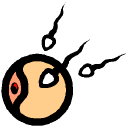The test-tube baby technique

IVF means fertilization outside the body in a test tube. Since the birth of Louise Brown, the first test-tube baby on 25 July 1978, IVF has resulted in about 12,000,000 babies worldwide. Pregnancy rates and live birth rates have improved over the past few years, leading to a steady increase in the number of IVF treatment cycles performed worldwide. For example in the USA, a total of 142,241 IVF cycles using own eggs and a total of 15,099 IVF cycles using donor eggs were performed in 2009 (SART report). The latest report from United Kingdom a total of 77000 IVF and ICSI treatment cycles were performed, in the United Kingdom (HFEA report 2024). The average overall pregnancy rate from IVF using fresh embryo transfer and patient's own eggs increase from 21% in 2012 to 31% in 2022 in the United Kingdom. Almost two-thirds of the women treated with IVF aged 37 or younger and almost one in five women having IVF in the United Kingdom is 40 years or older. In developed countries between 2-5% of births each year are through IVF treatments. Patients in hetrosexual relationships accounted for 90% of all IVF patients in 2022 in the United Kingdom (HFEA report 2024). Most of the IVF treatments in the UK were privately funded (59.7%) and the remainder were funded by NHS.
To whom IVF is advised?
Although IVF was first introduced for the treatment of women with tubal factor infertility, the list of indications was expanded and include:
- Women with blocked, damaged Fallopian tubes or inoperable tubes or whose tubes have been removed after ectopic pregnancies. approximately 12%
- Women with endometriosis. Approximately 6%
- Women with cervical mucus problems.
- Men with infertility problem. Approximately 37% .
- Women with ovulation disorders. Approximately 13%
- Men or women with immunological infertility problems.
- Couples with unexplained infertility. Approximately 32%
- A growing number of single women and women in same sex relationships are seeking fertility treatment using IVF with donor sperm as the route to motherhood. According to the Human Fertilisation and Embryology Authority in the United Kingdom (HFEA 2014 and 2018), 259 single women had IVF treatment in 2007. By 2012, the number had more than doubled to 632 and 1290 by 2017 It became easier for single women to have children with the introduction of the 2008 Human Fertilisation and Embryology Act. The Act removed the reference to "need for a father" when going for fertility treatment and replaced it with a requirement to provide "supportive parenting".
A full cycle of IVF treatment, with or without intracytoplasmic sperm injection (ICSI), should comprise 1 episode of ovarian stimulation and the transfer of ny resultant fresh and frozen embryo(s)
- In women aged under 40 years who have not conceived after 2 years of regular unprotected intercourse or 12 cycles of artificial insemination (where 6 or more are by intrauterine insemination), offer 3 full cycles of IVF, with or without ICSI.If the woman reaches the age of 40 during treatment, complete the current full cycle but do not offer further full cycles
- In women aged between 40 and 42 years who have not conceived after 2 years of regular unprotected intercourse or 12 cycles of artificial insemination (where 6 or more are by intrauterine insemination), offer 1 full cycle of IVF, with or without ICSI, provided the following 3 criteria are fulfilled (1) they have never previously had IVF treatment (2) there is no evidence of low ovarian reserve and (3) there has been a discussion of the additional implications of IVF and pregnancy at this age.
- Where investigations show there is no chance of pregnancy with expectant management and where IVF is the only effective treatment, refer the woman directly to a specialist team for IVF treatment.
- In women aged under 40 years any previous full IVF cycle, whether self- or NHS-funded, should count towards the total of 3 full cycles that should be offered by the NHS. .
United Kingdom Regulations of Assisted Conception
Human Fertilization and Embryology Act 1990 relate to legal parents offspring and ,made it illegal to conduct research on human embryo in vitro beyond 14 days
Human Reproductive Cloning Act 2001, which prohibited the implanting in a woman of a human embryo created otherwise than by fertilizationHuman Fertilization and Embryology Act 2008, which reflected on hybrid embryo debate and updated legal parenthood
Human Fertilization and Embryology (Mitochodrial Donation) 2015, which legalised mitochondrial replacement to prevent inheritance of mitochondrial disease